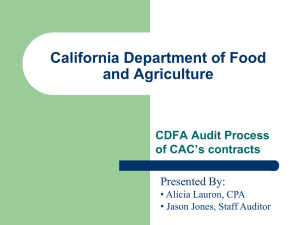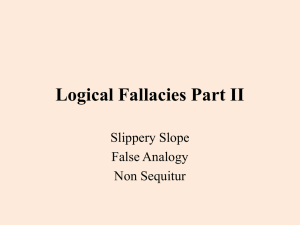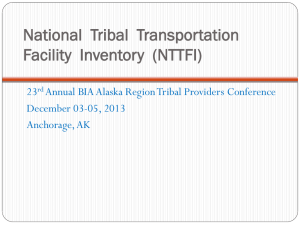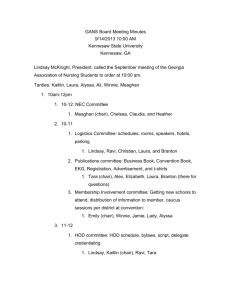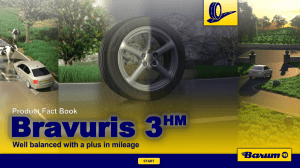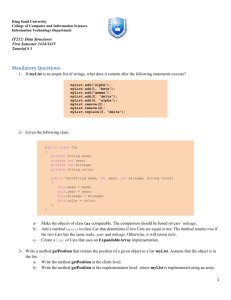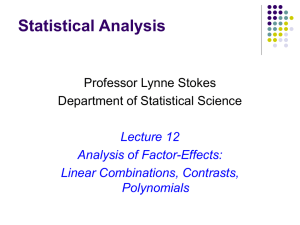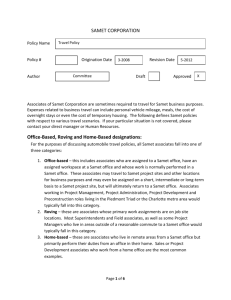OOP
advertisement
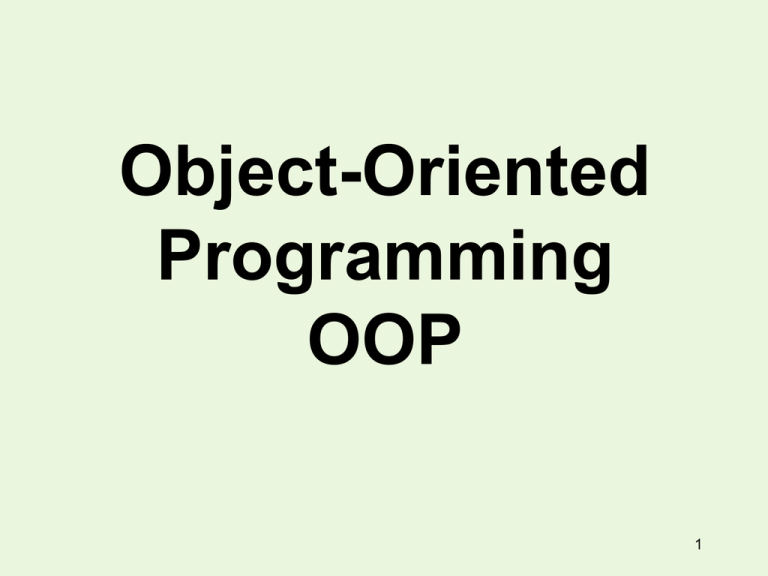
Object-Oriented
Programming
OOP
1
Object-oriented programming
is a new paradigm for
program development in
which the focus is on the
data instead of the functions
and control flow.
2
All programming can be
considered as the process of
modeling objects in the real
world (or now, in virtual
worlds).
3
The word “objects” is being
used in a very broad sense
here.
Cars, elevators, and dice can
be objects, but so also can
dates, times and addresses.
4
If we seek to model a car, we
try to capture 2 aspects of
“carness” – attributes and
capabilities.
5
Attributes are characteristics
of a car that we want to deal
with while ignoring other
characteristics that do not
matter to us in our modeling.
-- Abstraction –
e.g. year, make , model, color,
mileage, doors, horsepower,…
6
Capabilities are actions
performed by, for or on an
object. They often have the
effect of changing one or more
attributes of an object.
For a car, this might be – drive,
stop, go, fill up, change gears,
lock, paint, wreck, …
7
In OOP, rather than define a
particular car like my Canery,
we define a class called Car.
That class is a template that
we can use to construct my
Camery and your Jeep …
8
When we define a class we are
really defining a new data type
like int, char, float, …
It’s just one that YOU create from
scratch and decide how it works
and what it will do.
Actually, the strings we have
been using are a class that a
programmer developed.
9
Abstract Data Type (ADT)
An
abstract data type is a data
type whose properties (domain
and operations) are specified
(what) independently of any
particular implementation
(how)
10
When we designate an attribute we
have to specify a domain of values
that that attribute can have.
For Color, the domain might be
{Red, Blue, Green, Yellow, Orange}
For Mileage the domain would be
float.
11
Several Possible Representations
of ADT Time
3 int variables
10
45
27
3 strings
“10”
“45”
“27”
3-element int array
10
45
27
Choice of representation depends on time,
space, and algorithms needed to
implement operations
12
OK, now for some
examples.
13
class cars
Data members
{
private:
double gas_mileage; //gas mileage in mpg
double mileage;
//odometer reading
double gas_volume; //gas volume in gallons
public:
cars(double, double, double); //constructor func.
public:
~cars(void); //destructor function
void drive(double); //prototype for drive function
};
Function members
14
The word public means that this information is exposed to
other programs can refer to it.
Private means that this information is not available to
other programs. This is a lot like local scope.
Generally, data members are private and function member
prototypes are public.
However, the actual definitions of the function members is
not available to any program outside the class definition.
This means that the implementation of these member
functions can be changed without having any possible
effect on any program that makes use of the class, except
for speed of execution (assuming a correct program).
Keeping this information hidden is sometimes called
encapsulation.
15
cars::cars(double new_gas_mileage,
double new_mileage,
double new_gas_volume)
{
gas_mileage = new_gas_mileage;
mileage = new_mileage;
gas_volume = new_gas_volume;
}
16
void cars::drive(double distance)
//this function results in the car being driven
//distance miles. It must modify the internal variables
//accordingly
{
//amount of gas cosumed
double g_consum = distance/gas_mileage;
if (g_consum < gas_volume) {
mileage += distance; //increase mileage on odometer
gas_volume -= g_consum;
}
else {
mileage += gas_volume*gas_mileage;
gas_volume = 0;
}
}
17
void main()
{
cars civic(39, 0, 10); //construct a Honda Civic object
civic.drive(300);
}
Here we use the cars constructor to create an
instance (also called class instance, or object
instance or object) called civic.
civic is an object variable.
You can create as many object instances of a class
as you want.
18
One last characteristic of OOP that I will mention is
called Inheritance.
Inheritance allows a programmer to extend the
definition of a class to extend or specialize it, JUST
by adding the new data members and function
members that are needed.
So, from the Car class, we could derive a new class
Hybrid, by adding just the new stuff and inheriting
from the old class Car.
19
C++ classType
Facilitates re-use of C++ code for an ADT
Software that uses the class is called a
client
Client code uses class’s public member
functions to manipulate class objects
20

